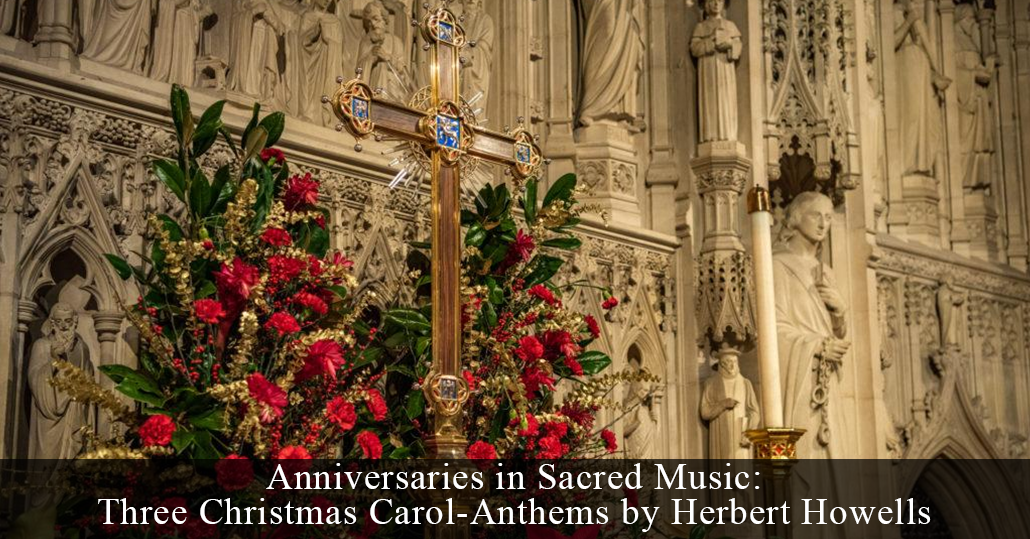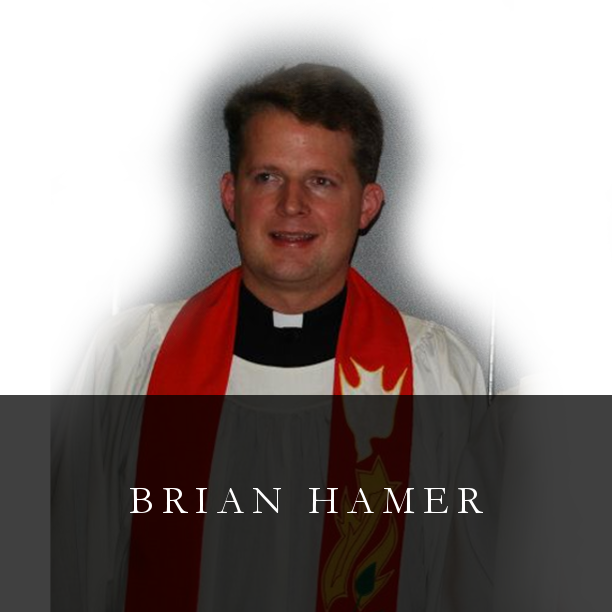The second stanza shifts from Old Testament prophecy to New Testament fulfillment, perhaps echoing St. Augustine’s oft-quoted dictum: “The New [Testament] is in the Old concealed; the Old is in the New revealed.” The Rose predicted in Isaiah was conceived by the Holy Spirit and born of the virgin Mary. The Rose (Christ) is spotless, that is, like us in every way, but without sin. Before the world, Jesus was just another birth during a Roman census, pretty well under the cultural radar. But before God and the faithful, this was the turning point of history and the fulfillment of hundreds of years of prophecy: “When all was still and it was midnight, [the] almighty Word . . . descended from [the] royal throne.”
Jeffrey Richard Carter identifies some aspects of Howells’ music in this anthem, which are indicative of his early works (circa 1912—1935). There are frequent metrical changes in response to the text. In the first seven measures, he changes meter six times! Thus the music serves the text, so that, in the words of Christopher Palmer, one senses a “timeless quality akin to the fourteenth-century lyric from which the words are derived” (Herbert Howells: A Study, p. 74). Carter also notes the use of silence. For example, each voice has a fermata over the rest after the baritone solo. Indeed, the choral parts have four quarter-note rests plus the fermata, so that “the change of texture, from soloist with chorus, to a slightly altered repetition of the same material from the first verse, is even more striking because of the enforced pause” (Choral Journal 42:8, p. 13).
| A spotless Rose is blowing Sprung from a tender root Of ancient seers' foreshowing Of Jesse promis'd fruit; Its fairest bud unfolds to light Amid the cold, cold winter And in the dark midnight The Rose which I am singing Whereof Isaiah said Is from its sweet root springing In Mary, purest Maid; For through our God's great love and might The Blessed Babe she bare us In a cold, cold winter's night. -- anonymous Medieval text, circa fourteenth century |
Christmas: “Sing Lullaby”
The second stanza continues the lullaby to Jesus, but adds a very important hint at Jesus’ crucifixion: “The naked blackthorn’s growing / To weave his diadem.” Here the poet, following patristic precedent, sees elements of the manger foreshadowing details of Jesus’ Passion. The blackthorns of Bethlehem, only a few miles from Jerusalem, foreshadow the thorns used to fashion Jesus’ crown of thorns, not unlike the similarity between the following verses in Luke’s Gospel: “And she gave birth to her firstborn son and wrapped him in swaddling clothes and laid him in a manger, because there was no place for them in the inn” (2:7) and His Passion narrative: “Then [Joseph of Arimathea] took [Jesus’ body] down and wrapped it in a linen shroud and laid him in a tomb cut in stones, where on one had ever been laid” (23:53). The third stanza approximates the first stanza, but adds the good news that this Jesus is “the Saviour of all,” that is, the One who would keep the law, suffer death, and rise again for all men.
Howells creates a musical lullaby through rocking motifs, that is, melodic lines flowing up and down and effectively surrounding the text as the “lullaby” of praise surrounds and enfolds the Christ. The voices sing in textual unison for the second stanza to proclaim, “Jesus, Born now in Bethlehem.” The mood shifts slightly in the third stanza, with the women’s voices perhaps representing the angels and the men echoing the faith of the shepherds? Writing in Grove Music Online, Paul Andrews says that in his church music Howells “found the perfect niche for his languid romanticism, a love of choral texture and resonant acoustics, in music of chromatic sensuousness,” all of which are evident in this performance by the Atlanta Master Chorale.
| Sing lullaby, sing lullaby, While snow doth softly [gently] fall, Sing lullaby to Jesus Born in an oxen-stall. Sing lullaby to Jesus, Born now in Bethlehem, The naked blackthorn’s growing To weave His diadem. Sing lullaby, sing lullaby While thickly snow doth fall, Sing lullaby to Jesus The Saviour of all. — text by F. W. Harvey (1888–1957) |
Epiphany: “Here is the Little Door”
But the second stanza preaches an even richer gospel as it reverses subject and objects, picturing the Christ-Child giving gifts to you and to me. In this rich imagery, the Child awakes and the worshippers lift up their hands in a gesture of praise. “For gold, He gives a keen-edged sword,” that is, the sword of the Spirit, which is the Word of God. “For incense, smoke of battle, red” for this little Child is God’s warrior, a new and greater David who will slay the Goliath of sin and death. And He gives “Myrrh for the honored happy dead,” recalling its use in ancient embalming rites. Yes, these gifts are “terrible and sweet,” for in the shadow of the manger there is the cross.
| Here is the little door, lift up the latch, oh lift! We need not wander more, but enter with our gift; Our gift of finest gold. Gold that was never bought or sold; Myrrh to be strewn about his bed; Incense in clouds about His head; All for the child that stirs not in His sleep, But holy slumber holds with ass and sheep. Bend low about His bed, For each He has a gift; See how His eyes awake, Lift up your hands, O lift! For gold, He gives a keen-edged sword. (Defend with it thy little Lord!) For incense, smoke of battle red, Myrrh for the honored happy dead; Gifts for His children, terrible and sweet; Touched by such tiny hands, and Oh such tiny feet. — text by Frances Chesterton (1869–1938) |
Robert W. Lehman summarizes the depth and legacy of sacred music by Herbert Howells:
| Howells’s music is difficult, to be sure; great depth of understanding and interpretive ability are required to perform it well. Those who make the effort, however, will be rewarded, because in his music Howells has expressed for all humanity what so few can articulate. His music cannot be described adequately in words—it must be experienced to be understood. – Choral Journal 33:3, p. 16 |



 RSS Feed
RSS Feed
